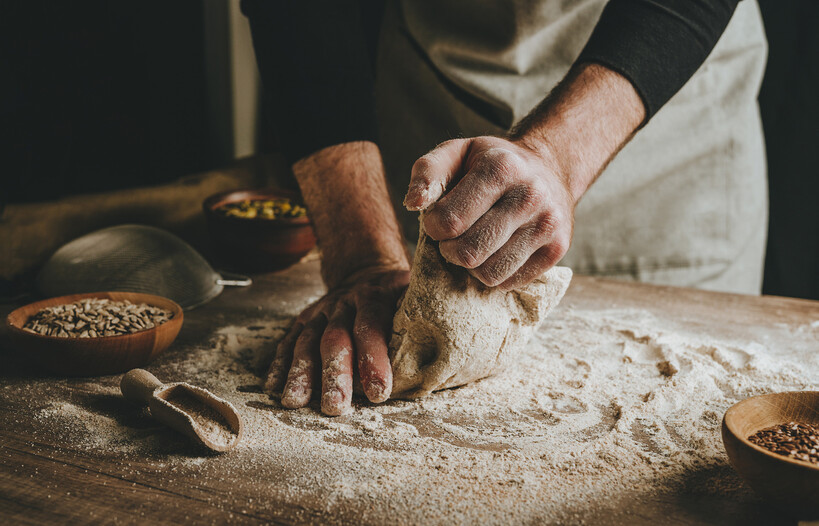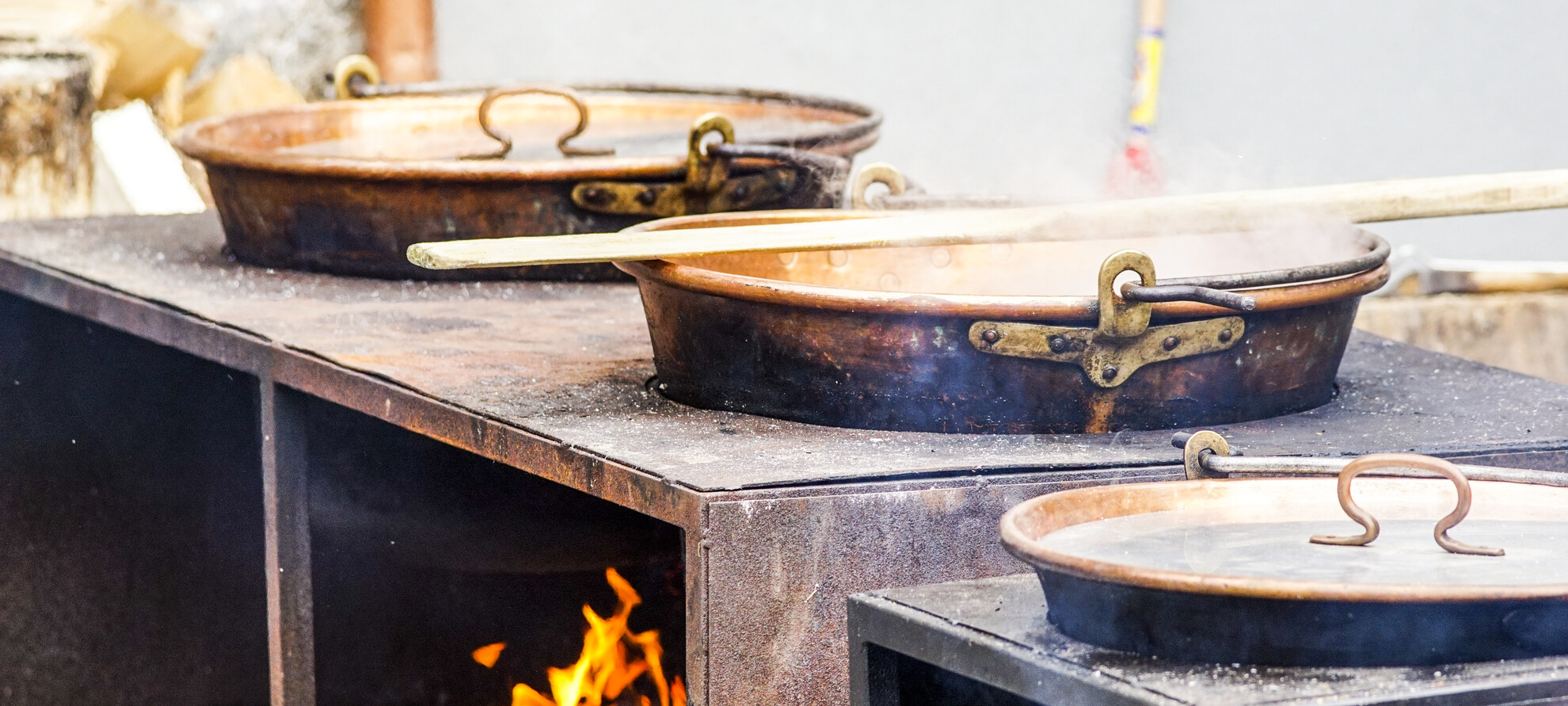The fruits of the Trentino winter
Pantries, cupboards and food self-sufficiency
Food subsistence of the mountain people in winter was hardly aplenty. Especially when it comes to the fruits of the earth. People warded off hunger with the supplies prepared before the cold months set in, thanks to the autumn fruit harvests. Chestnuts were turned into flour, corn became polenta, rye first then wheat were transformed into dough for broth and, on holidays, for a few other simple bread-making products.
The luckiest could count on cheese supplies and, as Christmas approached, on pork, cheap meat and seasoning to share during the days of Carnival, the New Year of the mountain peasant people, the period of abundance of everything: laughter, games and culinary feasts as good omen for the sowings to come.
The important thing was to keep the fire always lit under the “bronzin” to warm up and cook meals throughout the day. The bronzin was a large bronze pot hung above the fire with a thick iron chain, called “segosta”. In the bronzin foods were arranged in other pots in layers, according to the different cooking times. Very slow cooking... which began at dawn and ended at sunset. The satisfaction of being able to bring scattered flavours to the table without too much fuss depended on the possibility and creativity of assembling different ingredients, according to availability.
Soups were a must, even more succulent if dissolved in a good nutritious broth.
When the forest, which in spring, summer and autumn was the home garden for many families, began to hibernate, what could the mountain people count on? Potatoes, cabbage, turnips, broccoli and celeriac. The fruits of winter that withstand the frost of the earth and which, year after year, have seen their quality and reputation grow in Trentino.
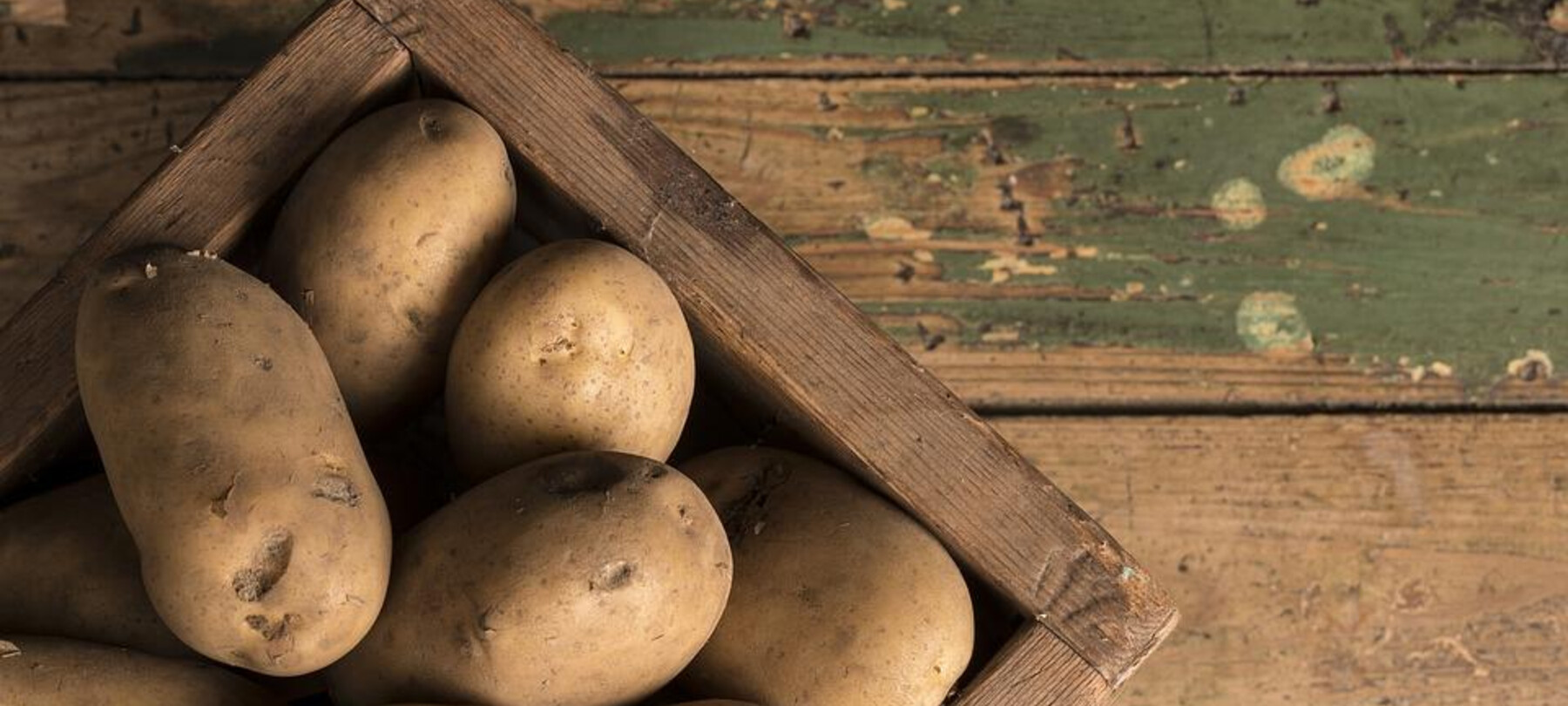
Potato
The potato is the undisputed queen of the Trentino table, good in all seasons. Not only because it is the core ingredient of the most delicious recipes; it is also nutritious and versatile, just remember the tortel (potato pie) served with cheeses, cured meats, cabbage and beans. Furthermore, it is always available. In addition to the very long natural conservation times, autumn sowing promises harvests even in winter!
The mountain potato can be grown up to 1500 metres above sea level. Its texture is particularly firm, and its flavour is intense and full, even without seasoning.
In the past, children stole potato gnocchi dough. They made balls of them and threw them onto the fornasela (vintage oven). They then flattened balls into pancakes of sorts, hoping to avoid burning them while cooking. Once nicely toasted, the pancakes were tasty snacks, especially if there was sugar, butter or jam left in the house.
The Bleggio and Lomaso areas, in the Giudicarie Esteriori, are most suited to grow potatoes in Trentino. It is here that farmers cultivate immense fields of potatoes, called “Le Montagnine”, which are particularly low in glucose and very rich in vitamin C. Winter is the season in which potatoes are best enjoyed, because they are grown according to the rhythms of the earth, by means of integrated and natural production. For this reason, potatoes are only available from late autumn to spring.
Look for them and try your hand at the Trentino recipes that we have selected for you at the bottom of the article.
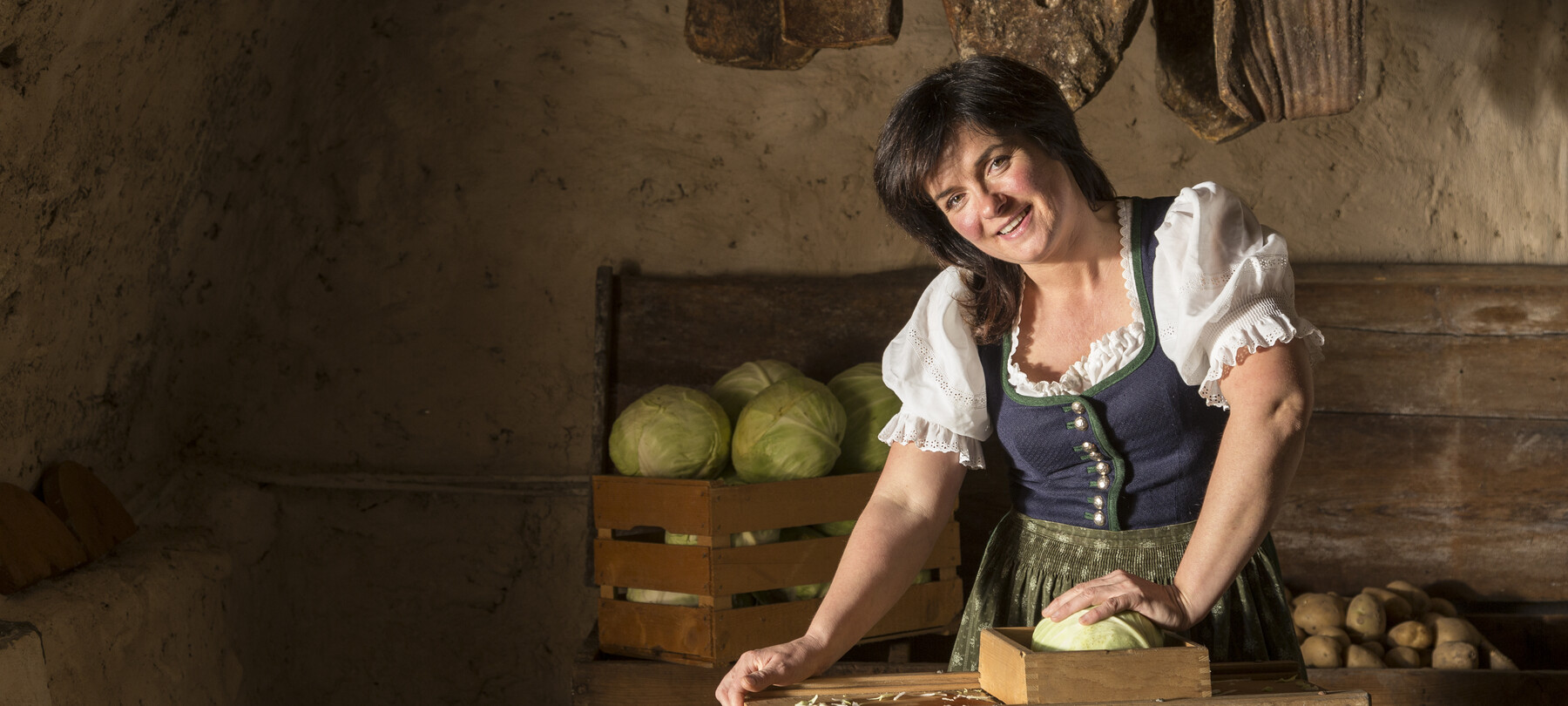
The cabbage
Anyone who doesn’t know sauerkraut, one of the symbolic foods of Trentino, please raise your hands! Already at the time of the Council of Trent (held between 1545 and 1563 in the city of Trento) there was a saying: “Without sauerkraut you can hardly have a meal all year round”.
Cabbage is paired with winter dishes, especially pork-based, everywhere in Italy. But in Trentino cabbage, transformed into sauerkraut, was and remains an almost daily ingredient on tables in the cold months. Today we find sauerkraut ready-made everywhere, but for centuries every family stocked up on cabbage, leaving it to ferment in wooden barrels kept in the cellar. Cabbage, cut into strips and cored, with or without the addition of white turnips, which increase its digestibility, were layered and seasoned with salt, cumin, wild fennel and juniper berries. The barrel was then hermetically sealed under the weight of a heavy boulder. After about a month, the sauerkraut was ready to eat. Large amounts of cabbage were needed to make sauerkraut, because, at the end of preparation, the yield was half the starting quantity.
In Trentino, cabbage has been grown since ancient times, because it is a vegetable that grows even in marginal lands, such as those at the edge of woods. Cabbage has always been an indispensable ally for those who live in the mountains, where in winter it is more difficult to find fresh food and, above all, vitamin C. Being vitamin-rich, cabbage helped keep scurvy at bay. So much so that, even in the 1950s, children left for their long journeys on foot to get to school with a good amount of crauti rostidi (roasted sauerkraut) in their backpacks.
In the organic garden of Trentino, Val di Gresta, where the first organic district of Trentino was born on a vast terraced amphitheatre, cabbage is grown, harvested and processed without the use of conventional or other synthetic fertilisers.
In Trentino you will have the opportunity to look for and taste delicious sauerkraut, offered in every valley according to family recipes, or you can try your hand at many tasty combinations, like this one with pork ribs.
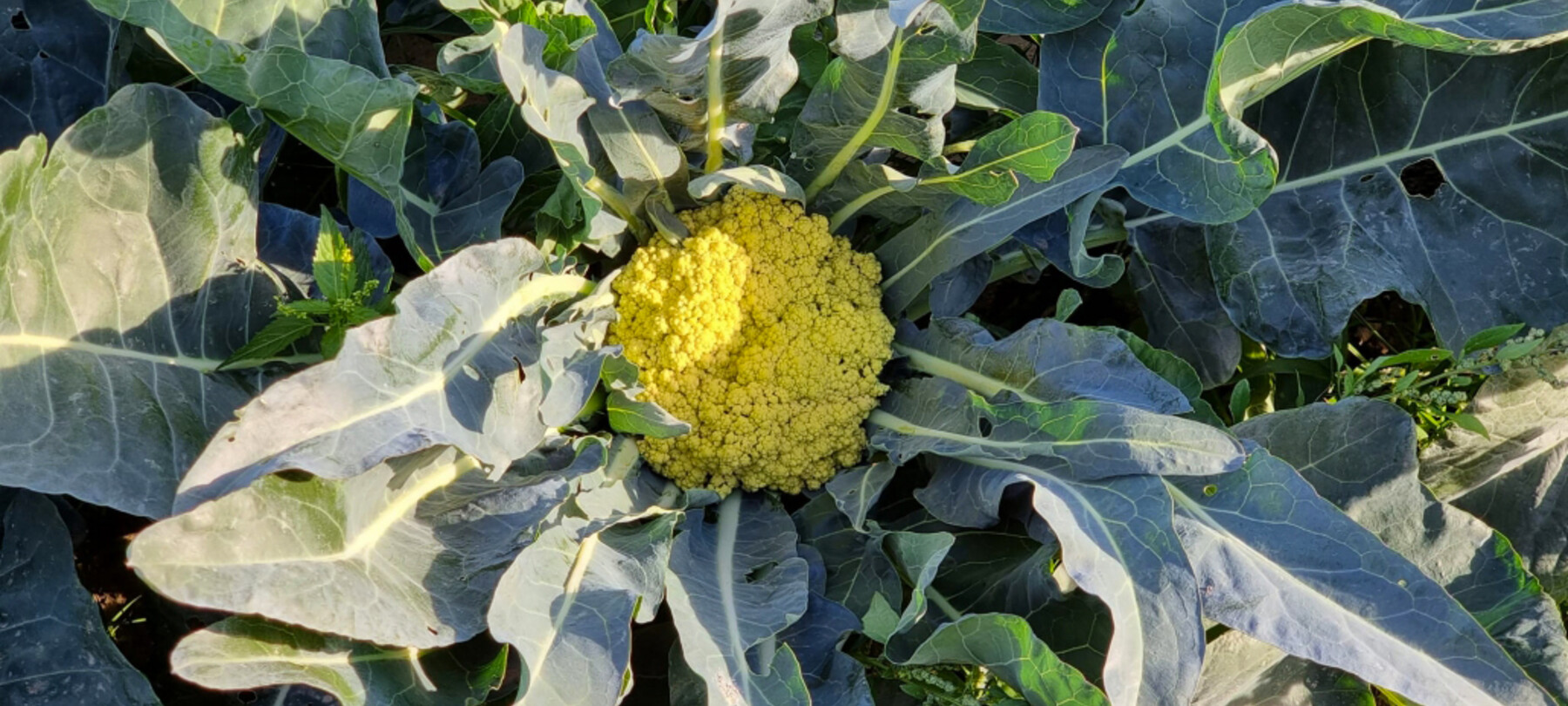
Torbole broccoli
It is loved by grandmothers and mothers as much as it is a children’s nightmare! In all respects, broccoli, rich in cancer-fighting compound and every mineral salt and vitamin, and with its brilliant color if cooked by expert hands, is the child and fruit of winter.
Like all healthy fruits, it also has its own peculiar attribute: a persistent, strong and embarrassing smell in the kitchen!
Well, in Trentino and only in a very small strip of land stretching from Linfano di Arco to Torbole di Riva del Garda, the very sweet seed of a Slow Food Presidium Broccoli, which leaves no odors when cooked, has been passed down from generation to generation.
And yes, right at the foot of Trentino, the winds of Garda protect the inflorescence of this jewel from frost.
Torbole broccoli only grows here. So strong is its seed that it requires nothing more than water and little manure, and has become the subject of field studies. It is harvested from mid-November to mid-January and you can taste broccoli in the dishes of local restaurateurs or get it directly from producers. It has a smaller shape than other broccoli, is yellowish-green in color and grows protected by long leaves, which are an excellent ingredient for canederli (dumplings) or soups. Its flavor is surprisingly sweet, a delight that continues to attract admirers who come to taste it from everywhere, as long as there is some... do not let the opportunity pass you by!
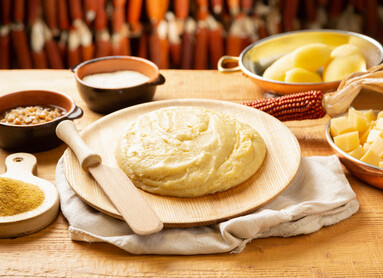
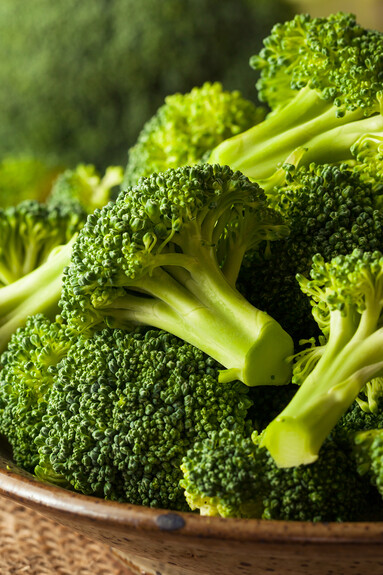
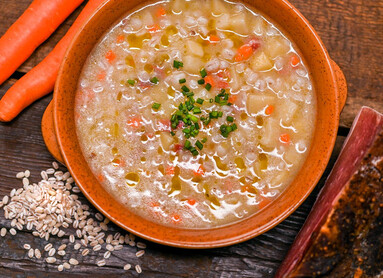
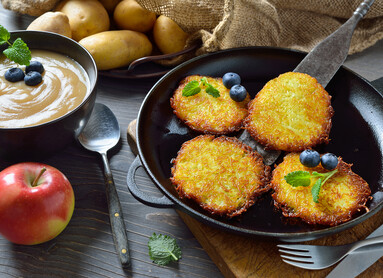
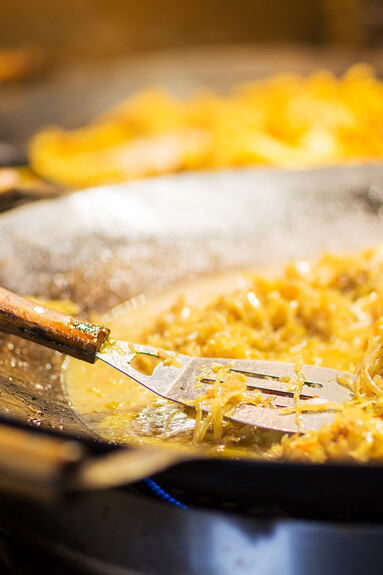
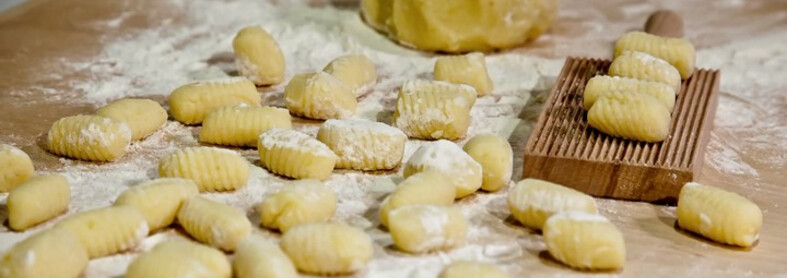
Celeriac
Last but not least, in the mountain peasant tradition, often remembered as “the cuisine of leftovers” which, especially in winter, had to rely on cooked and re-cooked soups, we find the celeriac, which, known and used for decades, became an important ingredient in Trentino in the second half of the last century, being systematically grown on the terraces of Val di Gresta.
A little-known tuber but very popular and appreciated in the tradition of mountain cuisine. It is grown and harvested on a two-year cycle and is increasingly available in the markets and on the menus of our restaurants. It is as big as a large round potato, and its texture is similar to the latter’s, although its water content reaches 90% of its mass. Very light and highly digestible, it is turned into mashed celeriac to be paired with meat- and fish-based dishes. Very rich in mineral salts, it boasts precious diuretic and detoxifying properties.
Try it in this velvety soup, perfect for digesting holiday meals.
